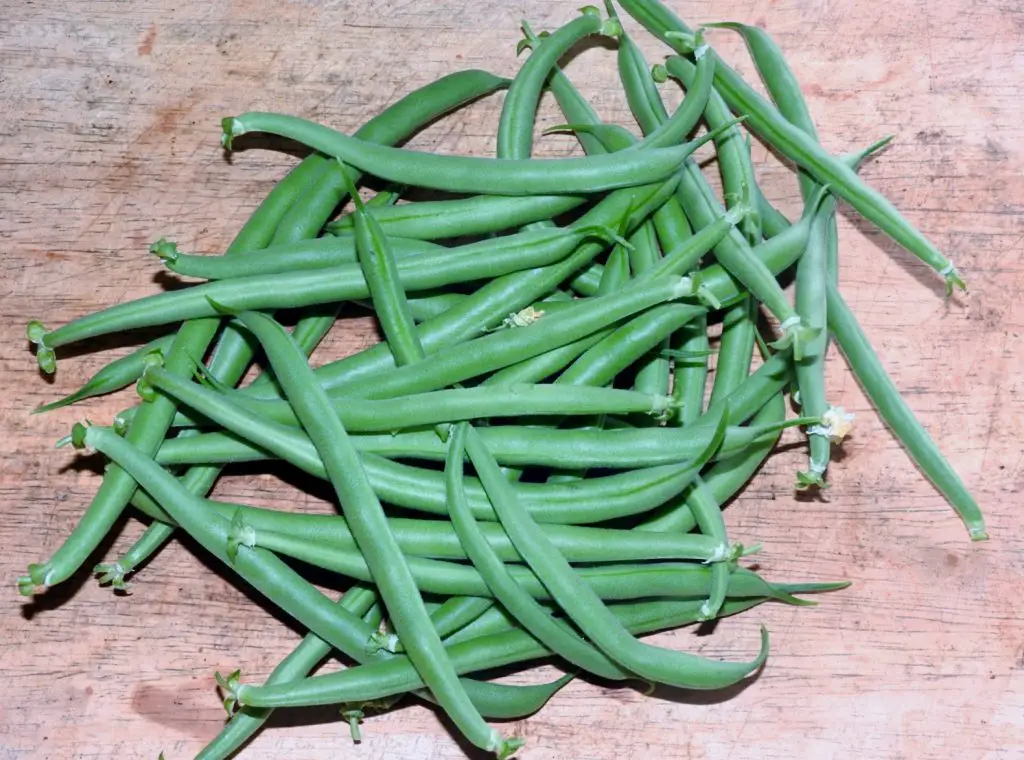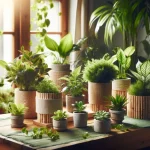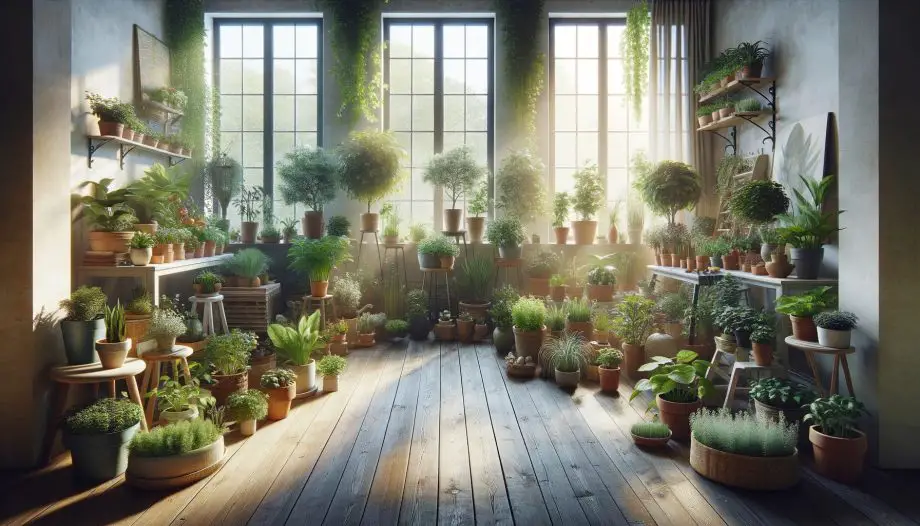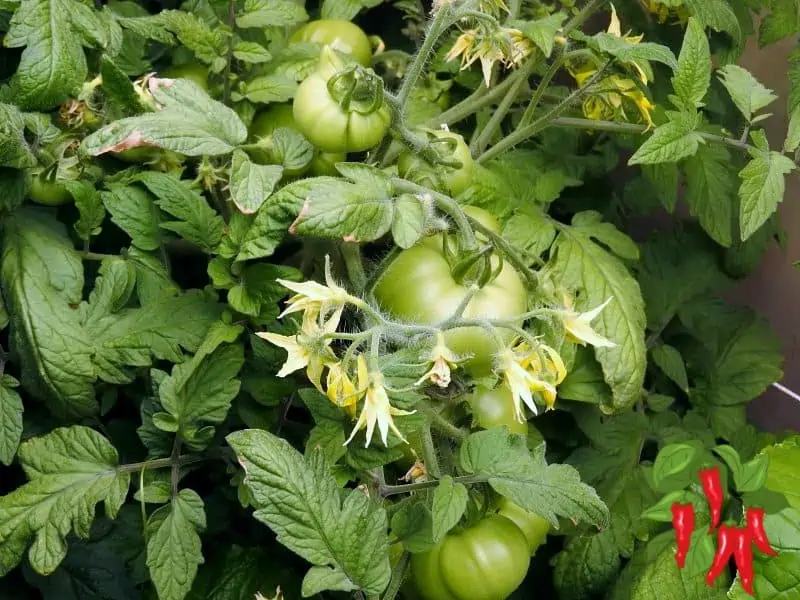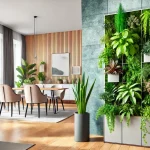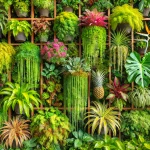This post may contain affiliate links. If you buy something from one of our links we may earn a commission. Thanks
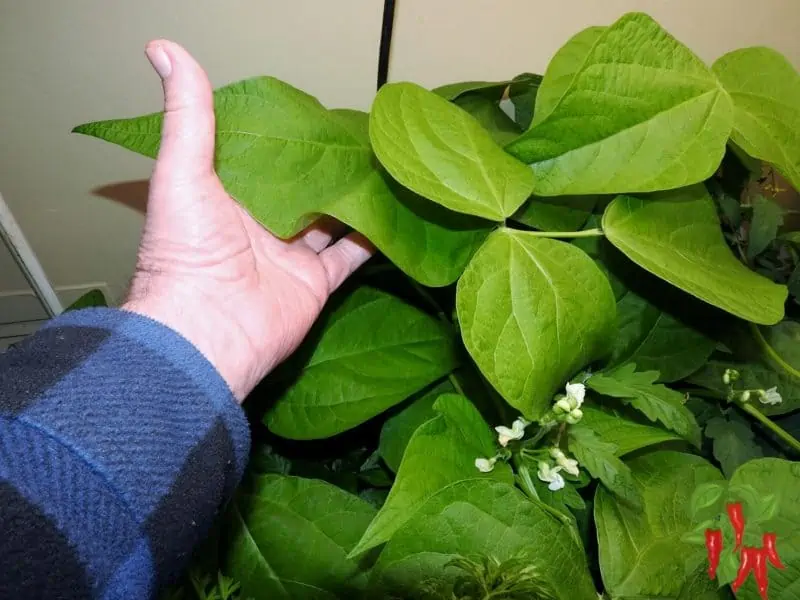
Wondering how to grow green beans indoors? It’s simpler than you think! Our guide helps you turn your home into a lush, bean-producing oasis, perfect for fresh, homegrown produce.
Growing Green Beans Indoors Key Takeaways:
- Growing green beans indoors is easy and rewarding.
- Start with bush bean varieties, using fabric pots and coco coir for optimal growth.
- Ensure 6-8 hours of sunlight or use grow lights.
- Water when the top inch of the coco coir feels dry.
- Harvest when beans are 4-6 inches long for a fresh, healthy crop.
How To Grow Green Beans Indoors
I want to show you how to grow green beans indoors. Even if you live in an urban environment and don’t have an outdoor garden there is no reason why you can’t grow your own green beans in containers.
Green beans are easy to grow and you can start harvesting snap beans in 50 to 60 days. They also make an attractive houseplant.
Bush varieties can be grown in a limited space and unlike a pole bean plant, they don’t need to be staked.
So you can have the best of both worlds, an attractive house plant and get fresh vegetables.
Benefits of growing your own vegetables indoors:
Growing your own vegetables indoors can be a fun and rewarding hobby that allows you to have a constant supply of fresh, healthy produce.
It is always summer and the growing season is year-round when you grow vegetables indoors. Out-of-season does not exist for your vegetable garden.
You don’t need to worry about the last frost date or the danger of frost indoors. These can devastate an outdoor garden.
It can also save you money on grocery bills and reduce your environmental impact by reducing food waste and transportation emissions.
Here are some green beans and other vegetables that I am growing indoors in fabric pots and coco coir.
Using Fabric Pots And Coco Coir
Fabric pots and coco coir as useful tools for indoor gardening:
Fabric pots and coco coir are popular tools for indoor gardening because they offer several benefits compared to traditional pots and soil.
Fabric pots are made of breathable material that allows excess moisture and air to escape.
Using fabric pots is one of the best ways for preventing root rot and other problems caused by overwatering.
It prevents root circling common in plastic pots by air pruning roots that try to grow out through the sides of the pot.
This results in more root growth along the pruned root and a better more fibrous root system for the entire plant.
Coco coir is a sustainable alternative to peat moss that is made from coconut husks and is known for its ability to retain water and nutrients, making it an ideal growing medium for indoor plants.
Coco coir not only weighs half as much as soil but you need less. A 2-gallon pot of coco coir is the same as 4 gallons of soil mix.
This is important for two reasons:
• First, you need to use less soil to grow the same amount of vegetables. So large containers of soil are not needed
• Secondly, because it is much lighter moving pots around is much easier.
I grow my snap beans in 2-gallon fabric pots and you really don’t need any larger containers than a 3-gallon pot.
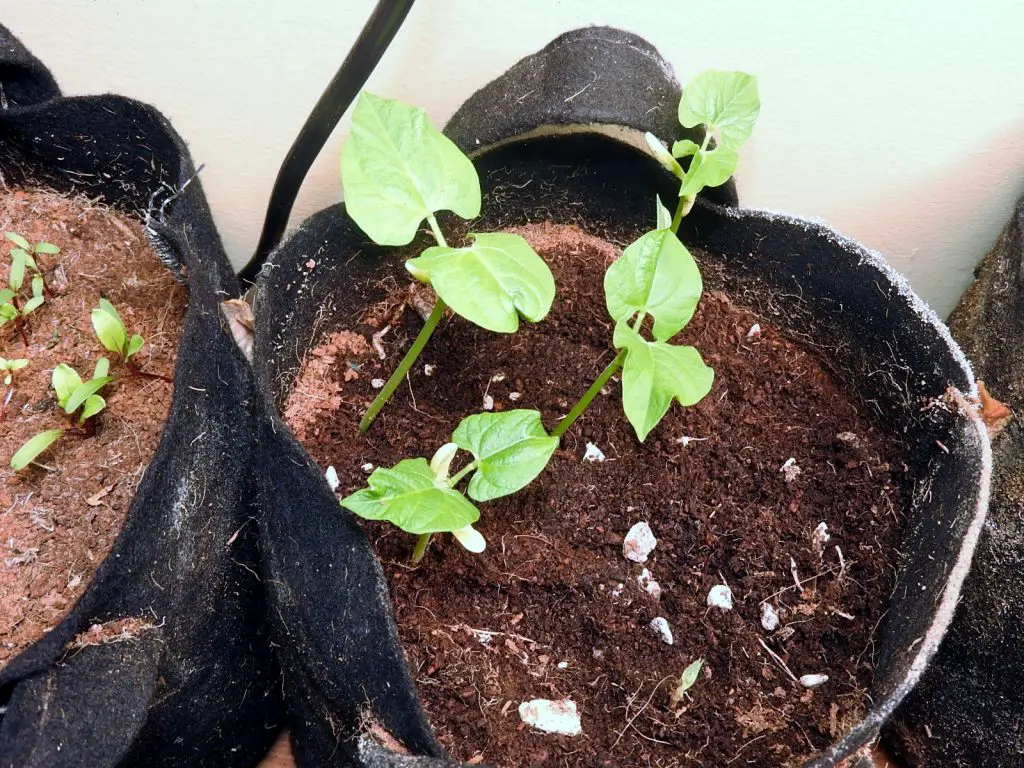
Choosing the Right Green Bean Variety
Considerations for selecting a green bean variety that will thrive indoors:
 When choosing a green bean variety for indoor growing, it is important to consider the size of your growing space, the amount of natural light available, and the growth habits of the plants.
When choosing a green bean variety for indoor growing, it is important to consider the size of your growing space, the amount of natural light available, and the growth habits of the plants.
Bean plants fall into 2 types of beans, pole beans, and bush beans. Bush beans are the best choice for growing beans indoors.

If you have a small space, you may want to choose a dwarf variety that will not grow too tall.
So we don’t need to be concerned with pole bean varieties but only bush bean varieties.
What Are Bean Plants?
Bean plants are a member of the legume family and their scientific name is Phaseolus vulgaris. They are an important plant because legumes fix nitrogen in the soil.
Runner beans(Phaseolus coccineus) are related to snap beans but they get long and tall so are not a good choice for an indoor garden.
Recommended green bean varieties for indoor growing:
Some green bean varieties that are well-suited to indoor growing include Bush Blue Lake, Contender, and Provider.
These varieties are known for their compact size and ability to produce a good yield in small spaces. They are perfect for container gardens.
A seed packet is probably all you need to get started.
The term string beans are used for older varieties that had a tough string running down the side of the pod.
Also before refrigeration people hung dried beans on a string and added them to soups or stews later. They were called leather britches.
Today most varieties have been selected to not have this string trait. But some folks still call them string beans.
Setting Up Your Indoor Growing Space
Tips for selecting a suitable location for your indoor garden:
When selecting a location for your indoor garden, look for a spot that receives at least 6-8 hours of sunlight per day.
If you don’t have a spot with natural light, you can also use grow lights to provide the necessary light for your plants. Read more about LED lighting.
It is also important to choose a location that is protected from drafts and has a stable temperature between 60-75°F. Bean plants prefer growing in warm soil.
How to set up your fabric pots and coco coir for optimal growth:
To set up your fabric pots and coco coir for optimal growth, start by filling your fabric pots with coco coir to about a half inch from the top.
Water the coco coir thoroughly to help it settle into the pot and remove any air pockets.
Coco coir (unlike potting mix) should be kept moist for best growth and not allowed to dry out.
You will want to set your fabric pot in a saucer or tray because when you water it will run out the sides of the pot at first and later when it is moist it will drain out of the bottom of the pot.
Then, plant your green bean seeds according to the package instructions, making sure to plant them at the correct depth and spacing.
Water the seeds gently with a misting bottle and place the pots in a location with indirect sunlight.
Once they have their first true leaves move them into direct sunlight.
Tips for providing adequate water and nutrients to your plants:
Green beans need consistent moisture to grow properly, but they also need good drainage to prevent root rot.
A warm soil temperature of at least 60° is needed for good germination and growth. Bush bean plants prefer growing in full sun.
To strike the right balance, water your plants when the top inch of the coco coir feels dry to the touch, and avoid letting the pots sit in standing water.
You can also use a balanced liquid fertilizer to provide the necessary nutrients for your plants.
Coco Coir Is Different Than Soil
Unlike potting soils, coco coir is a growing medium only. It does not supply any nutrients. So every time you water you should also fertilize it.
 Coco coir requires the addition of calmag with every feeding in addition to other nutrients.
Coco coir requires the addition of calmag with every feeding in addition to other nutrients.
This helps balance the coco coir and allows it to provide balanced nutrition to your plants.
 You can find fertilizers made specifically for growing in coco coir. These are the best coco coir nutrients. It is a 2 part system and you use equal amounts of both.
You can find fertilizers made specifically for growing in coco coir. These are the best coco coir nutrients. It is a 2 part system and you use equal amounts of both.
Caring for Your Green Bean Plants
Tips for maintaining healthy growth:
To maintain healthy growth, it is important to provide your green bean plants with the right amount of water and nutrients, as well as adequate light.
You should also prune the plants regularly to remove any dead or diseased branches and to encourage new growth.
If your plants are getting too tall or are starting to sprawl, you can also provide them with a trellis or other support structure to help them grow upright.
How to prevent and address common indoor gardening challenges:
Some common challenges that can arise when growing green beans indoors include pests, disease, and poor growth.
To prevent these issues, it is important to keep your growing space clean and free of debris and to regularly inspect your plants for signs of pests or disease.
If you do notice any problems, you can try using organic pest control methods or plant-based remedies to address the issue.
If your plants are experiencing poor growth, it may be due to a lack of light, cold temperatures or water, or nutrients, so try adjusting these factors to see if it improves their growth.
Harvesting and Enjoying Your Green Beans
Tips for determining when your green beans are ready to be harvested:
Green beans are ready to be harvested when they are about 4-6 inches long and have a plump, firm appearance.
You can also test for readiness by gently squeezing the beans between your fingers and they should feel crisp and snap easily.
Picking beans regularly will extend your harvest time. Don’t let them go so long that they develop bumps which are actually young seeds.
Ideas for using your homegrown green beans in meals and recipes:
There are many ways to enjoy your homegrown green beans. Some ideas include steaming them as a side dish, adding them to salads, or using them in stir-fries or casseroles. You can also pickle or freeze your green beans to extend their shelf life.
FAQs
What type of container should I use for growing green beans indoors?
It is best to use a container that is at least 12 inches deep and has drainage holes to allow excess water to drain out. A container made of a lightweight material such as plastic or fabric is also preferred as it can be easily moved around and will not be too heavy once the young plants start to grow.
What type of soil should I use for growing green beans indoors?
Green beans prefer a well-draining soil that is rich in organic matter. I prefer using coco coir for my growing medium.
But a potting mix specifically formulated for vegetables is a good choice, or you can make your own by mixing equal parts peat moss or coir, compost, and perlite.
How much sunlight do green beans need when grown indoors?
Green beans need at least 6 hours of direct sunlight per day to grow properly. If you do not have a sunny window that gets at least this much sun, you may need to supplement with a grow light.
How often should I water green beans when grown indoors?
Green beans should be watered regularly to keep the soil evenly moist, but not waterlogged. This is typically once or twice a week, depending on the humidity and temperature in your home and the size of the container. It is important to check the soil moisture level regularly and water when the top inch of the soil feels dry.
Final Thoughts
Here’s a quick recap of the benefits of growing green beans indoors using fabric pots and coco coir:
Growing green beans indoors using fabric pots and coco coir allows you to have a consistent supply of fresh, healthy produce year-round, and can save you money and reduce your environmental impact.
If you have a small space or limited natural light, indoor gardening with fabric pots and coco coir is a great option for growing your own green beans. Give it a try and see the benefits for yourself!
How To Grow Microgreens in Trays
Visit my Amazon Influencer Page for videos and gardening products Grow Your Own Garden

